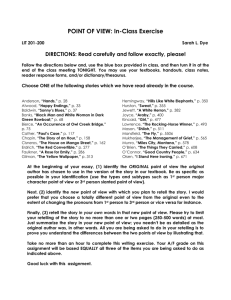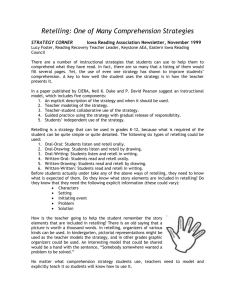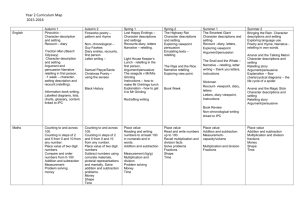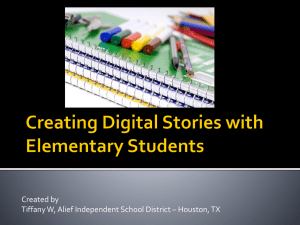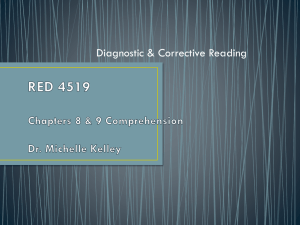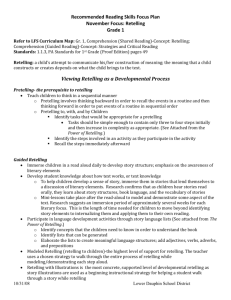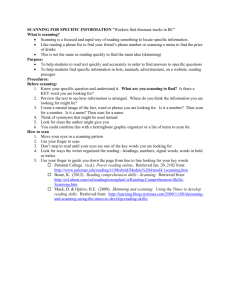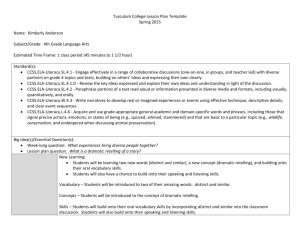Inst. Proj. Retelling for Reading Comprehension
advertisement
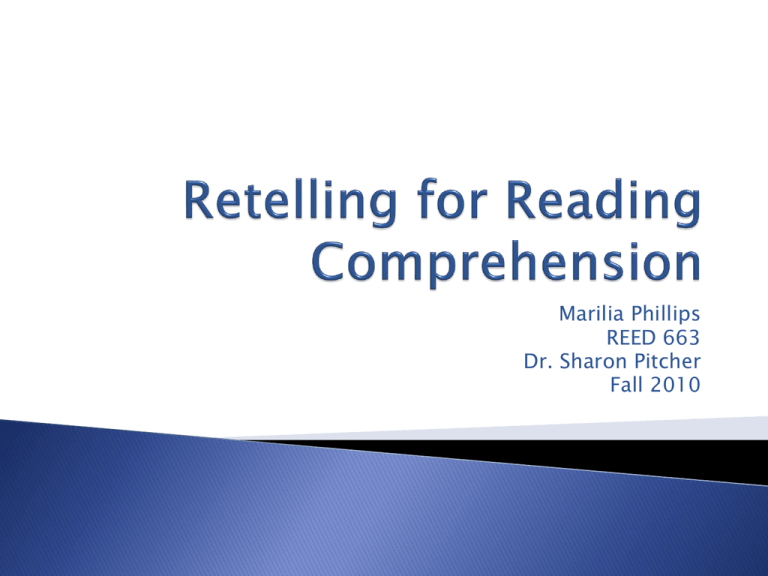
Marilia Phillips REED 663 Dr. Sharon Pitcher Fall 2010 Retelling provides an opportunity for readers to process what they have read by organizing and explaining it to others Research has shown that retelling increases both the quantity and quality of what is comprehended Retelling can be used as a strategy to help teachers assess comprehension and increase silent reading fluency Retelling. (n.d.) Retrieved from http:// classrrom.jc-schools.net/read/Retelling.pdf I worked with a group of four ESL students during a fourth grade guided reading lesson The lesson took place over a course of four days with a guided reading book on the students’ reading level The book used for this lesson was called “A Gift to Share” by Barbara Swett Burt. This book is about a little girl named Mattie that wanted to buy a birthday gift for her Aunt Debra. Mattie did not have enough money to buy a gift for her Aunt so she asks for some gift ideas from some of her family members. Mattie learns that the best gifts come from the “heart”. For this lesson, I had students preview the book and make predictions about what this book would be about Students took a picture walk and discussed what they thought was taking place in the pictures I asked students to read the first couple of pages in the book; and told them they would be writing what happened in the beginning and middle of the story on Day 1 on their yellow sticky notes Gradual Release of responsibility was shown on this day when students read the end of this book and retold events from the end of the story on yellow sticky notes with using the example I had shown from Day 1 Most students had no difficulty with continuing the activity with my example from Day 1 However, one student was confusing events and retelling from his story and said “I need more help to tell this story” Students used story maps to retell their story orally The yellow sticky notes provided as “support” for students to help them “fill in” the information in their story map The lesson concluded with the students taking their story map retelling and writing their retold stories on lined paper I wanted my students to use the story map to help them retell the story on lined paper because it helps children create “ownership” and “pride” that they can write in their own words I discussed my project with one of my colleagues in the ESOL department at my school I used direct quotes from my colleague regarding her suggestions for how to use story maps for retelling “I’ve only used a story map for retelling in conjunction with the 5-finger retell”. “That way, the kids have the story map (blank) to look at while they are orally retelling the characters, main events, problem, solution, etc..” The gradual release of responsibility for my lesson could have more scaffold for students that were having difficulty with their retelling For example, I could have had “mini conferences” with students to guide them more in their thinking The story maps were effective to help my students transfer the information onto their lined paper writing For future lessons, I would have students create story maps that included setting, characters, problem, and solution to further their understanding of details in retelling a story Burt, B. (1998). A Gift to Share. Austin: SteckVaughn Company. Retelling. (n.d.) Retrieved from http:// classroom. Jc-schools.net/read/Retelling.pdf
